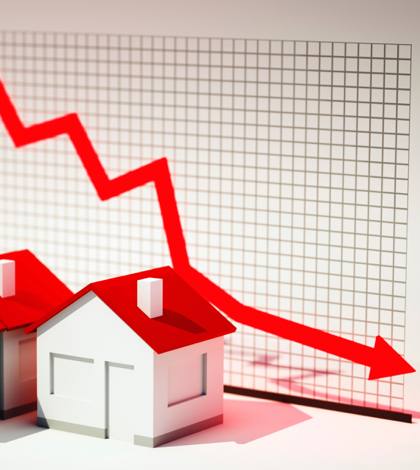Not enough houses are being built and that might not change in 2019, according to several experts.
It’s become an all-too-familiar story: housing prices in the Inland Empire keep going up, which causes sales to fall.
First-time buyers are being kept out of the market, and step-up buyers can’t buy their next home. That means no houses or condominiums get built and the market stays stagnant, at best.
The problem is so bad that it could cause a major slowdown of the Inland Empire economy, according to Christopher Thornberg, director of the UC Riverside School of Business Center for Economic Development and Research and a co-founder of Beacon Economics in Los Angeles.
In November, when he was delivering the business center’s 2020 Inland Empire economic forecast, Thornberg declared that if more houses aren’t built in the Inland region, workers may leave the area because they can’t afford a decent place to live.
That trend has already begun: More people who don’t have a college education are leaving the Inland region for states where they can afford to rent, Thornberg noted.
The Inland Empire doesn’t have an affordable housing crisis, it has a housing supply crisis, Thornberg told the gathering of public and private dignitaries at the Riverside Convention Center.
But the supply crisis is being driven by high prices, and that trend might not reverse in 2020, according to one source.
In data released in July, a real estate web site predicted that three of the Inland Empire’s major housing markets will keep seeing their rising prices into July 2020.
Riverside will see a 1.7 percent increase by next July, predicted zillow.com, a real estate data base that specializes in housing.
In San Bernardino, where home prices went up 7.1 percent between July 2018 and July 2019, prices are expected to rise 4.2 percent by the middle of next summer.
And, in Ontario, where prices rose 3.8 percent between July 2018 and July of this year, a 1.8 percent increase in housing prices is expected by next July.
In other words, a cooler market, with prices still going up but not as much as they have in the past. That’s an improvement, but it doesn’t point toward more houses being built.
A sluggish housing market isn’t confined to Riverside and San Bernardino counties. The problem is statewide, and so acute that Gov. Gavin Newsom has made solving the crisis one of his highest priorities, starting with his call for the construction of 3.5 million housing units statewide by 2025.
While some critics have called the 3.5 million goal unfeasible – that pencils out to 500,000 housing units per year – Newsom is nevertheless pushing hard to get more housing built.
He’s proposed softening state environmental impact laws to allow more housing construction and, one month into his administration, he used a new state law to sue Huntington Beach for not planning properly for new housing.
Newsom has the right idea, and he’s correct to make housing one of his administration’s highest priorities, said Robert Kleinhenz, an economic consultant who until recently was an economist with the business center and Beacon Economics.
“If you want to get more houses built, and everyone agrees we need to do that, you have to streamline the permitting process,” Kleinhenz said. “Show cities how to issue more permits and more houses will get built.”
But the Inland housing market is more likely to experience a slowdown in 2020 than it is a revival, said Jay Prag, associate professor of economics at the Drucker School of Management at Claremont Graduate University.
“We’re using up most of the land that’s easiest to build on, and as you move to different areas the prices will keeping going up,” Prag said. “That will slow down the market even more. The Inland Empire will still have lower prices than other markets, but I don’t see it changing much in 2019.”
 IE Business Daily Business news for the Inland Empire.
IE Business Daily Business news for the Inland Empire.


